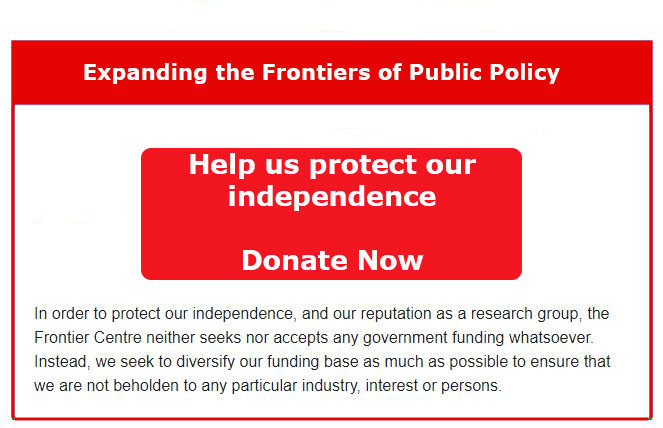There are many natural and geo-political phenomena that will affect the next several decades; climate change, COVID-19 and its variants, social unrest, and rising tensions between China and the United States amongst them. As governments and societies learn to anticipate and respond to emergent challenges there will be priorities set in preference for the most serious threats. One such geo-political event, the withdrawal of the United States and its North Atlantic Treaty Organization (NATO) coalition from Afghanistan, will have an unintended consequence that will resonate throughout communities, large and small, across the world, and sooner than anticipated.
Drug enforcement and the fight against global narcotics trafficking in Afghanistan have contributed significantly in combating sources for funding for terrorist organizations, and organized crime—already valued at several billion dollars annually. But law and order, while always at the core of political platforms and public concern, is often responded to in ways that have been short-sighted and often absent from the application of lessons learned. The signals in this instance, however, are quite clear, and need not be ignored.
Communities across the globe—almost without exception, have endured a tsunami of synthetic drug addictions and cost in enforcement, treatment, and loss of lives.1 Criminal organizations, unlike those involved in social work and public health, however, don’t see substance users as patients or people suffering from an illness—these ‘clients’ represent their customer base, their target market. And like any other business, work to maintain their customer base; to expand the market; to enhance competitive advantage; increase the footsteps to their outlets; grow the basket size of their purchasers; deter new entrants, and differentiate their product from those of their competition. They employ advertising, hostile-take-over, distribution of free samples, and are sensitive to regulation—in this case enforcement and interdiction. In other words they depend on the same dynamics and rely on the same tools employed by legal business enterprises.
The most important dynamic for business, including drug trafficking, is supply and demand. And supply and demand is about to experience a colossal shift within the next year. A shift, which will likely catch most communities unprepared—police, public health, social services, families, and governments included.
The U.S. withdrawal from Afghanistan is about to unleash a sleeping giant, which, for the past half century has at least been under some constraint. Compounded by what is now an established source of opium in South America—Columbia and Mexico, an emerging conflict in Myanmar, there will be new incentives for a dramatic expansion of the international heroin supply.2
These three sources—Afghanistan, South America (primarily Mexico and Columbia), and Myanmar (the Golden Triangle—constituted by Thailand, Laos and Myanmar) will experience and respond to new determinants for the global heroin trade. It is worth noting that there is a fourth source, which has been mostly left alone—Pakistan.
While Mexican drug cartels (Sinaloa Cartel) are primarily profit centered family businesses, opium and heroin trafficking in Afghanistan, Myanmar, and Pakistan are influenced and intertwined with political ideology and military conflict. Narcotics trafficking has contributed to arms purchases, funding insurgencies, and lining the pockets of corrupt governments and government officials in source regions, and sustained organized crime groups (OCGs) abroad.
Europol estimates drug trafficking has an estimated retail value of EUR$30 billion per year, and a major source of income for organized crime across Europe.3 According to the European Serious Organized Crime Threat Assessment (SOCTA), more than a third of the 5000 OCGs identified by the agency are directly involved in drug trafficking. SOCTA estimates there are 1.3 million heroin users across Europe contributing to heroin trafficking to the sum of about EUR$7.4 billion annually.4
Although current estimates indicate that the European heroin user population is stable, aging, and consumption levels remain stable, that is about to change. There have already been indications of increased opium and heroin trafficking along traditional trafficking corridors and entry points to Europe; including the Balkans and Turkey, identified as major transshipment points and Iran, which is considered a departure country.
The United Nations Office on Drugs and Crime (World 2020 Drug Report) cotes some examples:5
- A seizure of 670 kg of heroin from Afghanistan was intercepted in Frankfurt an der Oder, Germany, in May 2019 on a truck travelling from Kyrgyzstan to Belgium driven by a Turkish national living in Kyrgyzstan.
- A seizure of 1.1 tons of heroin seized in Kazakhstan on a truck that had departed the Islamic Republic of Iran with a final destination in Germany—a trafficking operation that involved people from Iran (Islamic Republic of), Turkey, Serbia, Poland, Germany and the Netherlands.
- A seizure of some 550 kg of heroin in Minsk, in November 2019, which had been trafficked via the northern route to Belarus for onward trafficking to the European Union, involving a number of foreign nationals.
Opium and heroin seizures in North America have remained relatively low—notwithstanding the abundance of synthetic opioids including fentanyl which has provided a cheaper alternative to heroin and opium. Fentanyl has been a preferred alternative to smuggled heroin for traffickers because it does away with the multi layers of trafficking hierarchy associated with heroin and opium (farmer to manufacturer to importer to distributer), each layer prone to multiple adulterations and dilutions; and for users because of greater availability, lower cost, and higher potency, but also because traditional heroin has been less available.
Fentanyl and other synthetic opioids have been more consistently and readily available, but that is about to change. As opium and heroin supply increase the quality, quantity, consistency, and price will all shift in favour of the consumer.
The DEA in its 2021 National Drug Threat Assessment notes:
As inexpensive, potent fentanyl continues to push into established heroin markets, fentanyl will augment, and in some cases supplant, white power heroin in various domestic markets.6
This assessment is an indication that the monitoring systems on which many law enforcement agencies rely may be relatively insensitive to new and emerging trends. While fentanyl is multiple times more potent than heroin and more cheaply manufactured, increases in heroin supply, augmented by improved processing will, without doubt, make heroin trafficking and addiction increasingly worse across Europe, North America, and elsewhere. It is as likely that new heroin will supplant fentanyl, which has been used as an adulterant to natural heroin, and in the process create new lines of competition and confrontation between OSGs attempting to protect or expand their turf.
The markets for opioid use are well established, as demonstrated by the fentanyl epidemic, OCGs are experienced in dealing with the authorities and market dynamics, and transshipment routes are increasingly democratized and accessible to even the remotest farm-gate supplier. Now, with the withdrawal of the U.S. and NATO source interdiction will also cease.
According to the UNODC 2019 opium cultivation in Afghanistan was estimated to cover 163,000 hectares (ha) with thirteen of thirty-four provinces categorized as opium free.7 In 2020 cultivation had increased by 34 per cent to 224,000 ha and twelve out of thirty-four provinces classified as opium free—22 provinces categorized as opium sources. Given that cultivation increased by 34 per cent with the inclusion of one additional province—inclusion of the remaining twelve provinces holds alarming potential.8 At the same time that cultivation has increased, the price of farm-gate fresh opium fell from US$52.00 per kilo to US$42.00 per kilo in 2020.9
In 2021 Afghan anti-narcotics police, verified by UNODC, destroyed 67 metric tonnes of drugs and precursors. That might seem like a substantial interdiction, however it pales compared to the regional production of opium and heroin.10 Still source region seizures represented a significant disruption to international trafficking, an intervention which for all intents and purposes will cease following the withdrawal of coalition forces from Afghanistan.
According to the United Nations Office on Drugs and Crime (UNODC) 385,799 metric tonnes of opium and 28,069 metric tonnes of heroin were seized in Afghanistan between 2012 and 2016. The seizures in Pakistan for the same period were reported to be 70,465 tonnes of heroin and 233,783 tonnes of opium. This represents a discrepancy of 42,396 tones of heroin.11 Smaller opium seizures with correspondingly larger heroin seizures in Pakistan imply that some of the opium originating in Afghanistan might have been destined for processing into heroin in Pakistan, a plausibility given the relationship between the Taliban and Pakistan’s Inter-Services Intelligence (ISI)—and its associated arms and conflict financing. Al Qaida set up headquarters in Pakistan’s tribal areas after U.S. forces arrived in 2001.
Also coming to an end is international foreign aid based on the so called “5 Pillar Strategy,” funded in large part by the United States (USAID), which has served to mitigate the impact of an opium culture: development of other sources of income for poppy farmers and a “good performers” rewards for provinces that make progress in reducing poppy cultivation, support for an Afghan Poppy Eradication Force for eliminating poppy cultivation, building capacity of the Counternarcotics Police of Afghanistan, a range of law enforcement and justice reform programs to aid in the investigation and adjudication of drug trafficking cases, and fifth, raising of public awareness through dissemination of information to farmers, opinion leaders, politicians, and others.12
The sizable seizures effected within Afghanistan during the past several years, assisted by NATO and the U.S., have been critical to the interdiction of international trafficking, organized crime, addiction trends across Europe and North America;13 and the trade of opium and heroin for the funding of terrorism and illegal arms trade.
Afghanistan accounted for the largest area under illicit cultivation globally in 2019, which increased by 34 per cent to 224,000 ha in 2020.14 With twelve out of thirty-four provinces classified as opium free in 2020 the likelihood of further increases is inevitable.
As Vanda Felbab-Brown, Director—Initiative on Nonstate Armed Actors Co-Director—Africa Security Initiative Senior Fellow noted in her testimony to the United Kingdom Parliament, House of Lords, International Relations and Defence Committee’s Inquiry into Afghanistan last year:
If the United States withdraws all of its military forces from Afghanistan, the opportunities and capacity for even selective interdiction, focused against the Taliban and terrorist groups, will shrink dramatically.15
Felbab-Brown emphasizes:
Without robust external funding, the Afghan state, whether under the existing political dispensation or dominated by the Taliban, will collapse. The drug economy will become further entrenched.16
Felbab-Brown, by the way, is not a proponent of pro-eradication policies.
The withdrawal of foreign aid, departure of foreign enforcement, and potential collapse of internal governance will greatly diminish, if not entirely eliminate, current levels of anti-narcotics enforcement and interdiction.
Afghanistan, unfortunately, is not the only competitor for opium and heroin trafficking. Only a few decades ago, the Golden Triangle—Laos, Thailand and Myanmar produced more than 70 per cent of all opium sold worldwide, most of it refined into heroin. That capacity has been significantly diminished, in great part due to sustainable development programs undertaken by Thailand. The Golden Triangle has been replaced by the Golden Crescent—the poppy-growing region around Afghanistan, Pakistan, and Iran.
Drug cultivation and production has not disappeared along the Golden Triangle, it has been replaced by the production of synthetic drugs including methamphetamine. In 2019, seizures of methamphetamine in East and Southeast Asia reached 140 tonnes, with the vast majority produced in Myanmar’s Shan State.17 Production and trafficking in 2019 was estimated to have generated profits of at least $71 billion, with methamphetamine accounting for $61 billion, four times what it was six years ago.18
Opium production in Myanmar for 2020 was estimated at 405 metric tonnes. Shan State supplied 331 tonnes—82 per cent of the total opium produced in the region.19 The world’s number one ranking drug lord, head of a multinational drug trafficking syndicate composed of an alliance of Asian triads in the Golden Triangle, has been Tse Chi Lop—a Canadian national, arrested in Amsterdam earlier this year.
The UNODC estimates Lop’s estimated annual revenues from the trafficking of meth to be between $8 billion and $17.7 billion a year.20 It is unlikely that Lop’s syndicate, described to be in a league of El Chapo and Pablo Escobar, will allow for competition in the region. The Golden Triangle will, therefore, most likely remain a source of methamphetamine, not opium or heroin—but the syndicate is a business and will follow the money.
The factional and pro-democracy agitation, which is seemingly escalating in Myanmar, will create opportunities for illicit drug trade to become an important source for financing rebel groups. While much of the drug activity within the Golden Triangle has transitioned to synthetic drugs, the potential for a resurgence of opium and heroin production looms large given its potential for financing conflict between various factions within Myanmar. The Restoration Council of Shan State/Shan State Army (RCSS) is one of several ethnic armed factions, already home to the largest producer of opium in the region.
Pakistan, an ally of the Taliban, too has assumed an increasingly larger share of opium production, together with Afghanistan making the Golden Crescent the new Golden Triangle. And Pakistan too is afflicted by tribal conflicts, systemic corruption, border disputes, and terrorism—fertile environment for OSG’s.
Like Afghanistan, Pakistan is a world-leading narcotics supplier, and with Iran, serves as primary gateways for opium and heroin. Europe, because of its proximity to the Golden Crescent, is more vulnerable. The United States, unlike Europe, is relatively insulated from Asian sources of opium and heroin. That insulation, however, will be easily overcome when incentivized by the types of profits at stake for OCGs across the globe.
Opium and heroin seizures in the United States, as has been the experience in Europe, have remained relatively stable over the past several years. U.S. Customs and Border Protection seized 17,771 pounds (8,060.8 kilograms) of heroin between 2018 and 2020.21 These relatively small seizures, while appearing to be a positive indicator for law enforcement, are an indication of the tremendous untapped potential market for opium and heroin in the United States; a market that will undoubtedly be tested by OCGs in the very near future.
Canada too has been lulled into a false sense of immunity against the threat of opium and heroin—despite the fentanyl epidemic. While rates of heroin offences increased for a number of years prior to 1993 (peaking in 1993), they have fallen dramatically.22 The Canadian Border Services Agency reported 2,831, 906 (2,831.9 kilograms) grams of opium seizures and 566,621 grams (566.6 kilograms) of heroin between 2017 and 2020.23 Canada, like the United States, has been relatively immune to opium and heroin importation.
And one cannot disregard the fact that what impacts the United States will inevitably spill over into Canada. That includes the northward movement of South American opium and heroin.
As the DEA notes:
The domestic markets for heroin, fentanyl, and other illicit synthetic opioids overlap, as these substances disproportionately affect the Great Lakes and the Northern regions of the United States.24
End-user countries, including Canada, should anticipate an influx of heroin, increased competition amongst OCGs, and cheap and abundant supplies of heroin, and a new wave of addictions. It is critical that law enforcement develop robust early detection systems and public health policies for detecting and mitigating the eventuality of an influx of new and potent heroin.
Governments should reassert drug supply reduction policies that target aspects of the illicit drug market, including prevention and disruption of drug-related crime—particularly organized crime, improve intelligence, and confiscation of criminal assets. At the same time, public health measures need to continue to be mainstreamed, expanded to include counselling, treatment, rehabilitation, social reintegration and recovery.
After all, an ounce of prevention is worth a pound of cure—an axiom worth remembering.
Anil Anand is a research associate at the Frontier Centre for Public Policy.
Photo by Michael Longmire on Unsplash.
[show_more more=”SeeEndnotes” less=”Close Endnotes”]
- “Opioid overdose”, World Health Organization, August 28, 2020. See: https://www.who.int/news-room/fact-sheets/detail/opioid-overdose
- The International Heroin Market, Office of National Drug Control Policy, White House, See: https://obamawhitehouse.archives.gov/ondcp/global-heroin-market
- Communication From The Commission To The European Parliament, The Council, The European Economic And Social Committee And The Committee Of The Regions, EU Agenda and Action Plan on Drugs, European Commission 2021-2025. July 24, 2020. See: https://ec.europa.eu/home-affairs/sites/default/files/what-we-do/policies/european-agenda-security/20200724_com-2020-606-commission-communication_en.pdf
- Ibid.
- World 2020 Drug Report, United Nations Office on Drugs and Crime, See: https://wdr.unodc.org/wdr2020/field/WDR20_Booklet_3.pdf
- “2020 National Drug Threat Assessment (NDTA)”, United States Department of Justice. See: https://www.dea.gov/sites/default/files/2021-02/DIR-008-21%202020%20National%20Drug%20Threat%20Assessment_WEB.pdf
- “Afghanistan opium survey 2019”, UNODC See: https://www.unodc.org/documents/crop-monitoring/Afghanistan/20210217_report_with_cover_for_web_small.pdf
- Ibid.
- “Afghanistan Opium Survey 2020: Cultivation and Production ‒ Executive Summary”, UNODC. See: https://www.unodc.org/documents/crop-monitoring/Afghanistan/20210503_Executive_summary_Opium_Survey_2020_SMALL.pdf
- “67 MT of Drugs and Precursor Chemicals Destroyed by Counter Narcotics Police of Afghanistan” UNODC, Kabul, July 1st, 2021. See: https://www.unodc.org/afghanistan/en/frontpage/2015/67-mt-of-drugs-and-precursor-chemicals-destroyed-by-counter-narcotics-police-of-afghanistan.html
- DATAUNODC, United Nations Office on Drugs and Crime. See: https://dataunodc.un.org/drugs/seizures
- Tarnoff, Curt. “Afghanistan: U.S. Foreign Assistance”, Congressional Research Service, August 12, 2010. See: https://fas.org/sgp/crs/row/R40699.pdf
- “World situation with regard to drug trafficking”, Economic and Social Council Commission on Narcotic Drugs, Report of the Secretariat, United Nations, Vienna, January 25, 2021. See: https://undocs.org/pdf?symbol=en/E/CN.7/2021/5
- Afghanistan Opium Survey 2020 Cultivation and Production ‒ Executive Summary. United Nations Office on Drugs and Crime. See: https://www.unodc.org/documents/crop-monitoring/Afghanistan/20210503_Executive_summary_Opium_Survey_2020_SMALL.pdf
- Felbab-Brown,Vanda. “Drugs, security, and counternarcotics policies in Afghanistan”, Brookings Institute, Thursday, October 29, 2020. See: https://www.brookings.edu/testimonies/drugs-security-and-counternarcotics-policies-in-afghanistan/
- Ibid.
- Fighting drug trafficking in the Golden Triangle: a UN Resident Coordinator blog, United Nations, September 20, 2020. See: https://news.un.org/en/story/2020/09/1071192
- Ibid.
- Myanmar Opium Survey 2020 Cultivation, Production, and Implications, United Nations Office of Drugs and Crime. See: https://www.unodc.org/documents/crop-monitoring/Myanmar/Myanmar_Opium_survey_2020.pdf
- Allard, Tom.“The hunt for Asia’s El Chapo” Reuters Special Report, October 14, 2019 See: https://www.reuters.com/investigates/special-report/meth-syndicate/
- Drug Seizure Statistics, U.S. Customs and Border Protection. See: https://www.cbp.gov/newsroom/stats/drug-seizure-statistics
- Ibid.
- Canada Border Services Agency seizures, Government of Canada. See: https://www.cbsa-asfc.gc.ca/security-securite/seizure-saisie-eng.html
- “2020 National Drug Threat Assessment (NDTA)”, United States Department of Justice. See: https://www.dea.gov/sites/default/files/2021-02/DIR-008-21%202020%20National%20Drug%20Threat%20Assessment_WEB.pdf
[/show_more]



